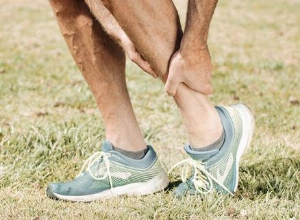Motion sickness: how can it be treated?
Published 28 Aug 2022 • By Candice Salomé
Motion sickness can cause such symptoms as nausea, dizziness, etc., and occurs during travel by car, boat or plane.
Motion sickness is totally benign but very unpleasant for all those who suffer from it.
So what actually causes motion sickness? Why do some people get it and others don't? How can it be prevented?
We explain it all in our article!

What is motion sickness?
Motion sickness, also known as kinetosis or naupathia, usually accompanies a trip by sea (seasickness), plane (airsickness), car or train. It is a common and mostly benign problem.
This disorder is due to an inappropriate response of the brain. The cause is conflicting information provided by the eyes and the vestibule, which is the organ of balance located in the inner ear.
In fact, the eyes perceive a movement (the turns a car makes), whereas the vestibule registers an impression opposite to that communicated by sight (the body does not move).
Thus, the vestibule cannot give the brain accurate information about the body's position. This prevents the body from adapting to movement as it normally does when travelling.
Motion sickness can cause various symptoms, the intensity of which varies from person to person.
The first symptoms that set in include:
- A feeling of discomfort in the upper abdomen,
- Nausea and a feeling of being "sick to your stomach",
- In young children: being disgusted with food, crying, restlessness and/or yawning.
Then, other symptoms may appear:
- Hypersalivation,
- Vomiting,
- Pallor and cold sweats,
- Headaches,
- Dizziness,
- Accelerated breathing,
- Sudden fatigue.
These symptoms usually disappear when the vehicle stops or a few minutes after getting out of it. The intensity of the symptoms also diminishes with repeated travel or after several days of prolonged travel (e.g. on a cruise).
Some people are more prone to motion sickness than others. It is more common in women and children aged 2 to 12, but also in people prone to migraines or those affected with labyrinthitis (inner ear disorder). Women who are pregnant or who use hormonal contraceptives are also more likely to be affected by motion sickness.
In addition, the feeling of anxiety, fear or poor ventilation increase the likelihood of motion sickness. Certain genetic factors may also increase the chances of suffering from motion sickness.
People who have already experienced an episode of motion sickness are generally apprehensive about future travel and are likely to experience more severe symptoms during the next trip. The symptoms may even develop in advance, in anticipation of the trip.
How to avoid motion sickness?
There are some simple measures that can be taken to avoid motion sickness, or at least to limit its manifestations:
- It is advisable to avoid heavy meals before a trip, but you should not travel with an empty stomach either. You should opt for solid foods rather than liquids.
- It is essential to avoid alcohol, tobacco and coffee before and during your trip.
- In the car, sit in the front seat next to the driver or in the centre of the back seat and look far ahead.
- Try to keep your head upright and avoid sudden movements throughout the journey.
- On the boat or on the train, sit on the forward-facing seats.
- On the boat or on the plane, choose a seat in the middle of the aircraft. This is because the movements are less ample.
- Avoid reading, writing or doing anything that requires your visual attention.
How can motion sickness be treated?
Anti-nausea drugs
Anti-nausea drugs are the most effective drugs against motion sickness. This is the case with sedative antihistamines (known as first-generation) such as cinnarizin, diphenhydramine or meclizine. They should be taken 2 hours before departure. Their duration of action is quite long (about 6 hours). This is an advantage, but also a disadvantage, as you should not drive after having taken these medications. These treatments should be taken with care because, if used incorrectly, they can cause neurological or cardiac problems.
In addition, scopolamine, which can be found in the form of a patch to be applied behind the ear 4 hours before the journey, is also effective. Its action lasts for 72 hours. Scopolamine should be used with caution among the elderly. It can also interact with alcohol and certain drugs, particularly those with anticholinergic properties (a substance that opposes the action of acetylcholine, a molecule that acts as a chemical mediator and allows communication between two neurons). Medical advice is required in pregnant or breastfeeding women before any administration of scopolamine.
Metopimazine may also be a good option. It is a lozenge that works quickly and prevents vomiting. However, it does not prevent other symptoms of motion sickness.
Essential oils
Peppermint and lemon essential oils have a tonic and refreshing action and can relieve digestive disorders. They can be found in certain mouth sprays or in mixtures of essential oils to be inhaled. They provide an immediate feeling of well-being that calms nausea. They can also be taken orally (not for children under 7 years old): it is recommended to put 1 to 2 drops on a sugar cube.
Anti-nausea bracelets
These bracelets stimulate specific acupuncture points. Their effectiveness has not been proven but they have the advantage of being completely safe and some people find them useful.
And what about you? What works for you when you suffer from motion sickness?

 Facebook
Facebook Twitter
Twitter




